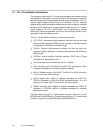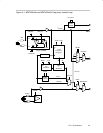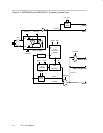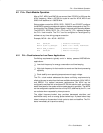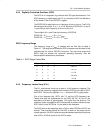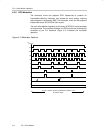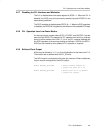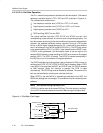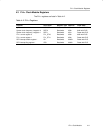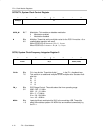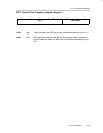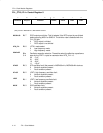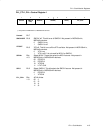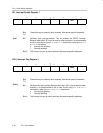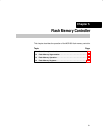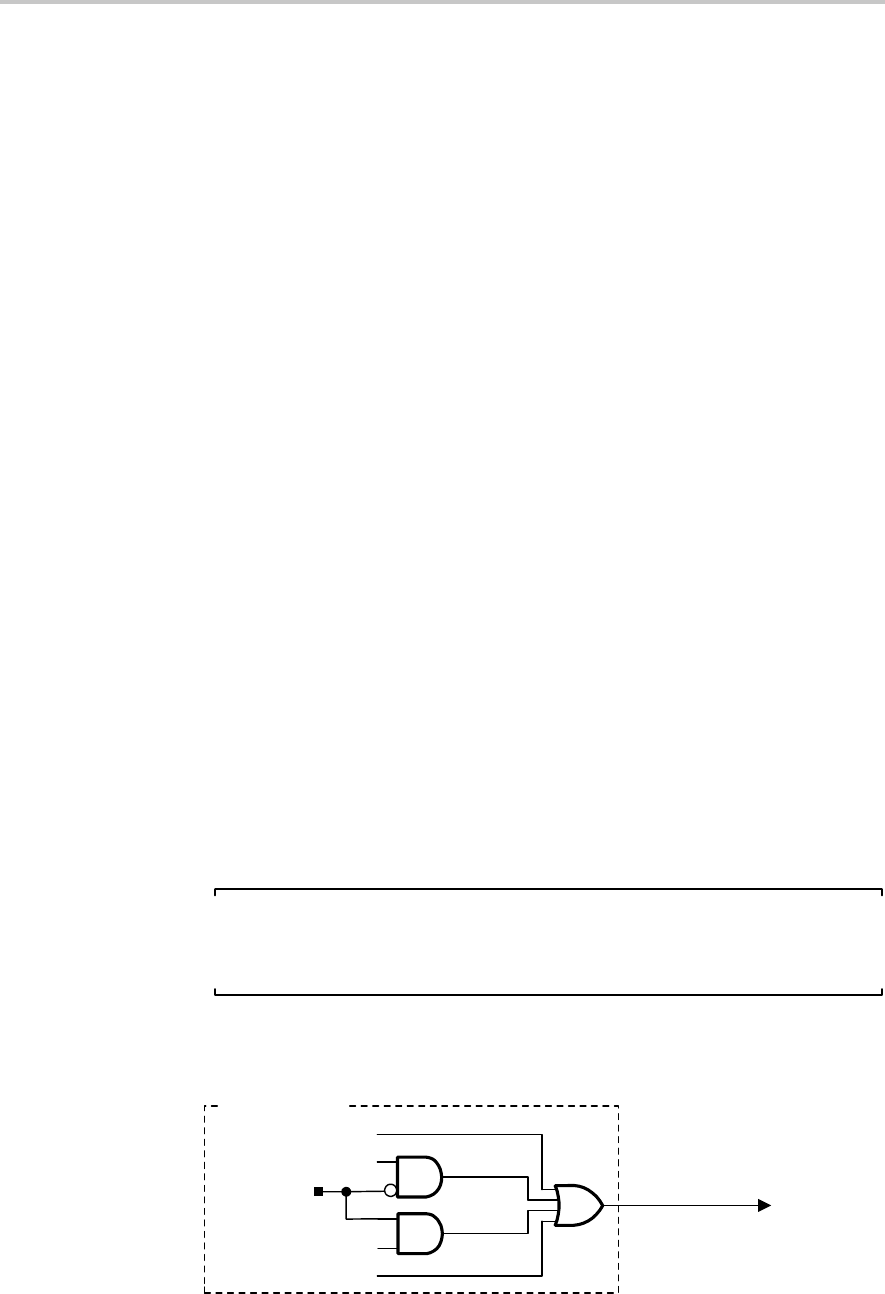
Buffered Clock Output
4-10 FLL+ Clock Module
4.2.10 FLL+ Fail-Safe Operation
The FLL+ module incorporates an oscillator-fault fail-safe feature. This feature
detects an oscillator fault for LFXT1, DCO and XT2 as shown in Figure 4−4.
The available fault conditions are:
- Low-frequency oscillator fault (LFOF) for LFXT1 in LF mode
- High-frequency oscillator fault (XT1OF) for LFXT1 in HF mode
- High-frequency oscillator fault (XT2OF) for XT2
- DCO fault flag (DCOF) for the DCO
The crystal oscillator fault bits LFOF, XT1OF and XT2OF are set if the
corresponding crystal oscillator is turned on and not operating properly. The
fault bits remain set as long as the fault condition exists and are automatically
cleared if the enabled oscillators function normally. During a LFXT1crystal
failure, no ACLK signal is generated and the FLL+ continues to count down to
zero in an attempt to lock ACLK and MCLK/(D×[N+1]). The DCO tap moves
to the lowest position (SCFI1.7 to SCFI1.3 are cleared) and the DCOF is set.
A DCOF is also generated if the N-multiplier value is set too high for the
selected DCO frequency range resulting the DCO tap to move to the highest
position (SCFI1.7 to SCFI1.3 are set). The DCOF is cleared automatically if
the DCO tap is not in the lowest or the highest positions.
The OFIFG oscillator-fault interrupt flag is set and latched at POR or when an
oscillator fault (LFOF, XT1OF, XT2OF, or DCOF set) is detected. When OFIFG
is set, MCLK is sourced from the DCO, and if OFIE is set, the OFIFG requests
an NMI interrupt. When the interrupt is granted, the OFIE is reset
automatically. The OFIFG flag must be cleared by software. The source of the
fault can be identified by checking the individual fault bits.
When OFIFG is set and MCLK is automatically switched to the DCO, the
SELMx bit settings are not changed. This condition must be handled by user
software.
Note: DCO Active During Oscillator Fault
DCOCLK is active even at the lowest DCO tap. The clock signal is available
for the CPU to execute code and service an NMI during an oscillator fault.
Figure 4−4. Oscillator Fault Logic
DCO Fault
LF_OscFault
XT1_OscFault
XT2_OscFault
XTS_FLL
LFOF
XT1OF
DCOF
XT2OF
Set OFIFG Flag
Oscillator Fault



